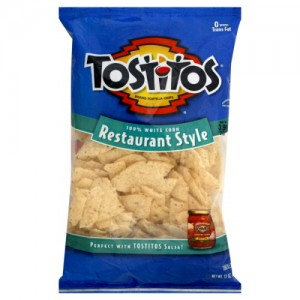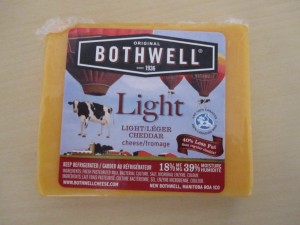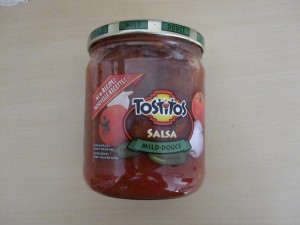For lunch I was craving Nachos (home made).
So I bought nacho chips, cheese and Tostitos Sauce. I spread the chips on a baking pan and shredded some cheese on them, and placed it in the oven for 5-7 minutes. After my Nachos were ready I was sipping them in my sauce and enjoying.
NACHO CHIPS:
The main ingredients are corn, buckwheat flour, whole oat flour and whole wheat flour. USA produces a lot of its corn and I assume that US corn is used as one of the ingredients in the chips. Most of the farms that grow corn are located in the Southern of the USA. The same I can apply for wheat, since USA is a large producer oh wheat and so that can be used to produce the chips. Moreover, Wikipedia states that manufacturing plant for such chips is located in Florida. I would guess that this is one of the plants (or many be the only one) that produces Tostitos Chips, from where it is packaged and shipped out to different parts of the North America. Just to ship the chips will require a lot of energy. Similarly to all of the food, the large amounts of the produces are delivered to ports (if it was shipped by train) or other storage facilities, from where distribution companies load and deliver the products, such as Tostitos Chips to super markets like Safe Way, where I purchase it. Packaging is made form plastic, so oil must have been used to produce the plastic, as well as the oil that is contained in the packaging plastic itself. Moreover, the production, the cutting, and the baking of the chips required large amounts of oil (probably) to fire the plant or the factory, where such chips are produced. The heat required to bake the chips, most likely require a lot of energy.
CHEESE:
The main ingredient of cheese is, of course, milk. Bothwell website stated that it purchases its mild from neighbours. So, i assume milk is produced in Manitoba, same as the cheese itself. From Manitoba, the place where the farm is located, to Vancouver, BC, it is nearly 2,500 km. I speculate that the cheese is transported by semi trucks, or by train. Either way, it goes through the same process as any products that are delivered from far away. e.i. the product is delivered to warehouses or ports, where distributors deliver it in the local supermarkets. Again, the transportation is oil intensive. In terms of production, Cheese goes through many steps (as outlines on the website), which are all energy intensive. However, Government of Manitoba website states that most of its electricity is produced from Hydro. So, in terms of energy used during production, I will assume that hydroelectricity is “green” and thus no or very little oil was used. Yet, packaging must contain oil, as all plastic is made from petroleum (oil) products.
SAUCE:
Sause is imported to a number of provinces, from where it is distributed across Canada. it is most likely imported from the USA, same as the chips. So, the production takes place in America, then it is transported to Canada. Again, shipped, by either trucks or trains. Again, this requires oil (or other fossil fuels like coal) to power either trucks or trains. Either way, at takes a lot of oil to transport the product to Canada, and the redistributed to all the part of Canada. In addition, the main ingredient is tomatoes. USA grows its own tomatoes, so it is possible that tomatoes that are used in the sauce are from America. Many Southern States, like California are popular for tomato production. Many of the times greenhouses are used (as stated by Wikipedia), which can be energy intensive, thus likely oil intensive. Also, from the farms tomatoes have to be delivered to a factory where the sauce is produced. In addition, the packaging is made from glass. Yet, factories usually would produce such cans. And energy is required to power the plants. If the cans were produced in the US, most likely that the source of energy was form fossil fuels, like oil.



